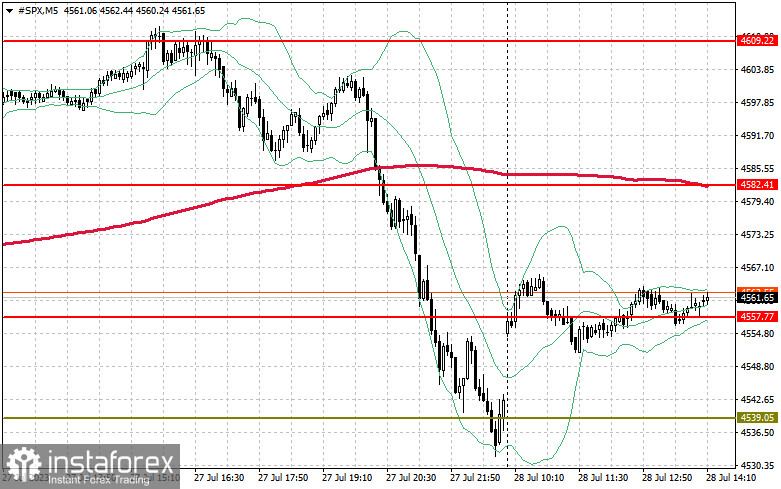Futures on US stock indexes opened with a slight increase following a major sell-off on Thursday evening. This week is undoubtedly the most tense week in the calendar for stock markets as earnings reports from several major global companies are coming to an end. Many investors are also betting that the rise in interest rates in developed countries, starting with the US and ending with the eurozone, is nearing its end. European stock indexes have declined but are still set for a third consecutive weekly gain.

S&P500 futures rose by 0.5%, and Nasdaq 100 gained 0.6%. Intel Corp. surged by 8% in premarket trading after the chip manufacturer posted a strong forecast for the third quarter.
Meanwhile, bonds worldwide dropped after the Bank of Japan, the only major central bank that has not yet begun to taper its ultra-loose monetary policy, surprised investors by easing control over market rates. Rumors of this move started circulating last night, exerting significant pressure on the US stock market.
Previously capping bond yields at 0.5% to stimulate borrowing and the economy, the central bank stated today that it now views this level as a reference point rather than a strict limit. This led to Japan's 10-year bond yields reaching the highest level since 2014. Speculation about such actions being the first step towards ending extraordinary stimulus caused substantial fluctuations in the yen, momentarily lifting it by 1% against the US dollar.
Markets in other countries also reacted to the possibility that higher domestic yields would prompt Japanese investors, who hold a significant amount of US bonds, to reduce their investments in foreign debt - another reason for sell-offs in the stock market.
Currently, the US Treasury bond yield remains around 4%, sharply rising late on Thursday evening after the news of Japan's willingness to alter its yield curve control policy.
The Bank of Japan's decision is an invitation to sell the US dollar. The higher Japanese yields reduce the spread relative to US Treasury bonds. Given the recent rapid inflation growth in Japan, any measures aimed at tightening policy will contribute to a weakening of the US dollar against the Japanese yen.

Regarding the S&P 500 index, the demand for the trading instrument remains. Bulls have a chance to continue the uptrend. They need to fix the price above $4,557. From this level, there may be a surge to $4,582. Bulls should also settle the price above $4,609, which will strengthen the bullish market. In the event of a downward move due to decreased risk appetite, bulls will have to protect $4,557. Breaking through this level, the index may return to $4,539 and $4,515.
 English
English 
 Русский
Русский Bahasa Indonesia
Bahasa Indonesia Bahasa Malay
Bahasa Malay ไทย
ไทย Español
Español Deutsch
Deutsch Български
Български Français
Français Tiếng Việt
Tiếng Việt 中文
中文 বাংলা
বাংলা हिन्दी
हिन्दी Čeština
Čeština Українська
Українська Română
Română

